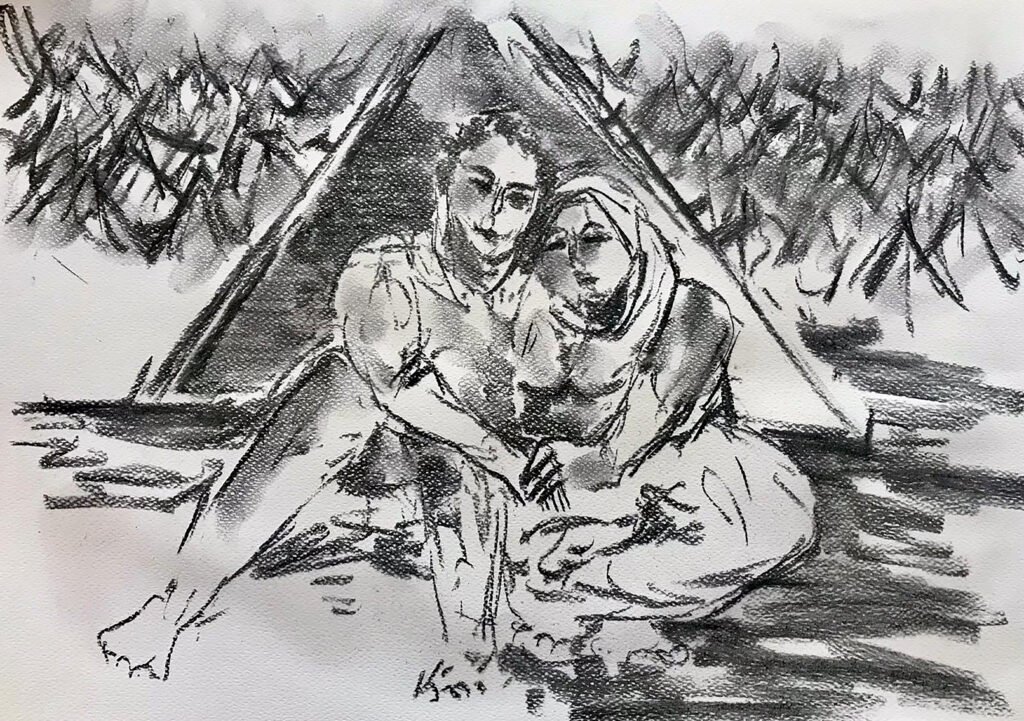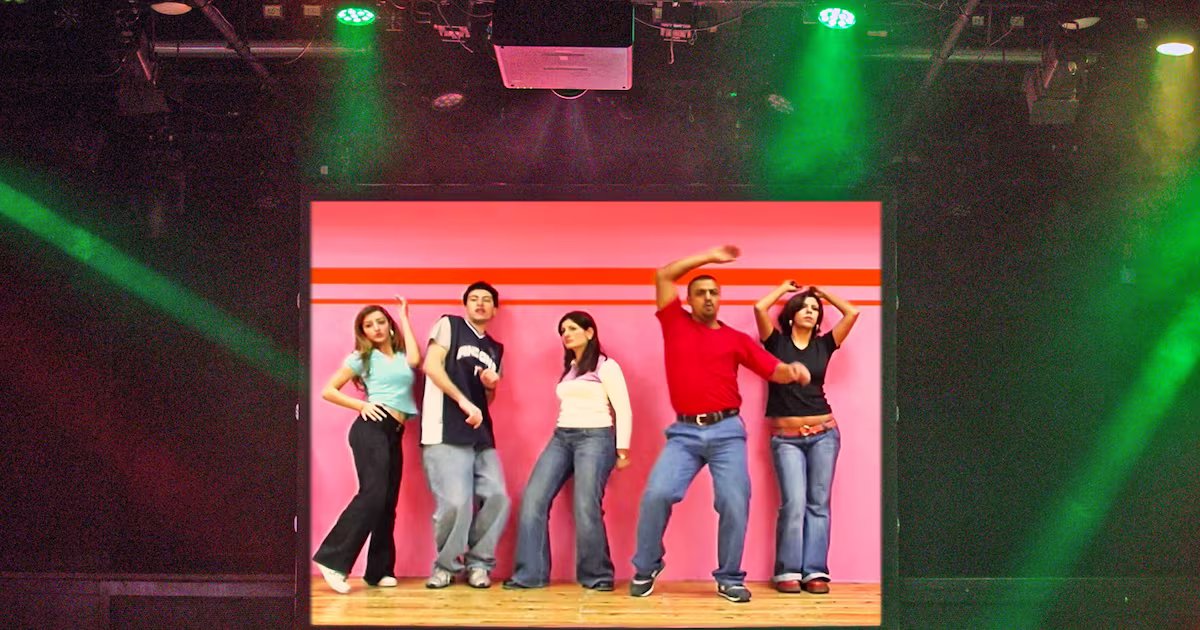Basel Elmaqosui hopes to keep memories alive through drawing and teaching children art, as Israel’s bombs continue to destroy dreams and reality in Gaza.
“I try to keep my humanity alive through drawing and teaching children,” says Basel Elmaqosui, a Palestinian artist living in Gaza who has survived bombings.
“I search for stores that sell drawing materials,” he explains. “I have managed to buy paper and charcoal pencils but cannot paint in colour: everything around me is black, frightening, terrifying and violent.
“This led me to depict scenes of everyday life with a charcoal pencil,” Basel tells The New Arab.
Fifty-three-year-old Basel lives in Rafah, near the border with Egypt, with his wife, five children and other relatives.
Leaving Gaza is very difficult and expensive. “The cost to organise the journey amounts to $10,000 per person,” Basel reminds us.
Despite the difficulties, the Palestinian artist seeks to find some normality by continuing to create art.
“Now I’m working with a group of children in shelters. I am unable to sleep because of the bombings; it causes a lot of anxiety and fear, so drawing is the only distraction for me.”
Conditions in Gaza are terrifying, with death lurking at every moment and place. “I have lost a large number of family members and friends. I try to paint to preserve my dignity, but I’m struggling a lot.
“I’m a human being, I think I deserve to live. I worry about the basic needs of my relatives, such as finding water, food and even the possibility of using the bathroom.”
Basel’s work stands out, producing art that documents people’s lives and their daily struggles. He has also become known for his speed in drawing.
“I found myself depicting the nightmares that haunt me, in the dreams of my children and my wife there is only terror and fear. I wish I could use sweeter words, but it’s not possible,” he tells The New Arab.
“I have created works that I titled Fragments: along the streets, there are fragments everywhere, shards that destroy buildings and tear bodies into pieces.”
Basel also uses the notion of ‘fragments’ to refer to Palestinian people themselves, who have been shattered and broken.
“Everything is fragmented — human beings, buildings, streets, trees, tents and even human rights. Life has become a collection of scattered fragments and shreds.
“Who will gather the pieces of a child who has lost his parents, of a man who has lost his wife or of a mother who has lost her children and her newborn? During the ethnic cleansing that Israel is carrying out against the Palestinian people, I try to assemble the scattered fragments to create a clear and complete picture,” Basel explains.
Before the start of the war, Basel lived in Beit Lahia, in the northern part of the Strip. After October 7, his life, like that of thousands upon thousands of other Palestinians, became a continuous search for shelter, food and water.
“Every day we try to avoid death. There is no way out for over 1.2 million displaced people, crammed into this small city. Continuous bombings by land, air, and sea chase us, leaving behind dead, injured, disabled and shocked people, with no chance of recovery,” he says.
After a few days in the UNRWA reception centre, some mothers asked Basel to teach their children to draw. The artist noticed that several children spent their time drawing their dreams and the desire to return home.
“One child drew a cat,” he recalls, explaining how when the food for the animal ran out and its price increased to $50, the child’s family were forced to abandon it.
“Even the mothers participated in the drawing session,” Basel said. “They drew crying, and I cried with them.”
Basel believes that in times of war, art is like water in people’s lives. “Art is a way to communicate without speaking, it’s a language, a tool that allows the artist and those around him to cling to the positive aspects of life and overcome fear.
“Through my lessons, I aim to help children reduce their fear and terror. Drawing is a useful tool to develop creativity, interact with the world and explain what one thinks innovatively,” he adds.
“Art is the language of peace, love and life. Drawing and playing with children are the only tools of resistance I have to improve living conditions.”
Basel explains how he has created several works related to the war. “I try to paint ‘the smell of martyrs,’ of the people killed. The idea seems strange, painting is perceived with the eyes and perhaps with touch, but how to perceive smell in a picture? Here come into play the moments we are experiencing, colour, senses, love and the belonging to this place.”
This is not the first time the artist has lost his home in the bombings; in 2008 Basel’s house was reduced to rubble along with his works. Fortunately, the artist recovered some of his artwork and exhibited it in a show.
In 2003, together with some colleagues, Basel founded the artists’ collective Shababeek: the underlying idea is that the language of art can reveal what lies behind the superficial gaze of the media, which spreads a negative and distorted image of Gaza.
In recent months, the Strip has become synonymous with death and destruction. “Despite the war though,” Basel says, “Gaza is a beautiful place, with people who love peace, hope for a better future and seek beauty in all things.”
Giovanni Vigna is a freelance Italian journalist with a focus on Middle Eastern and global politics






